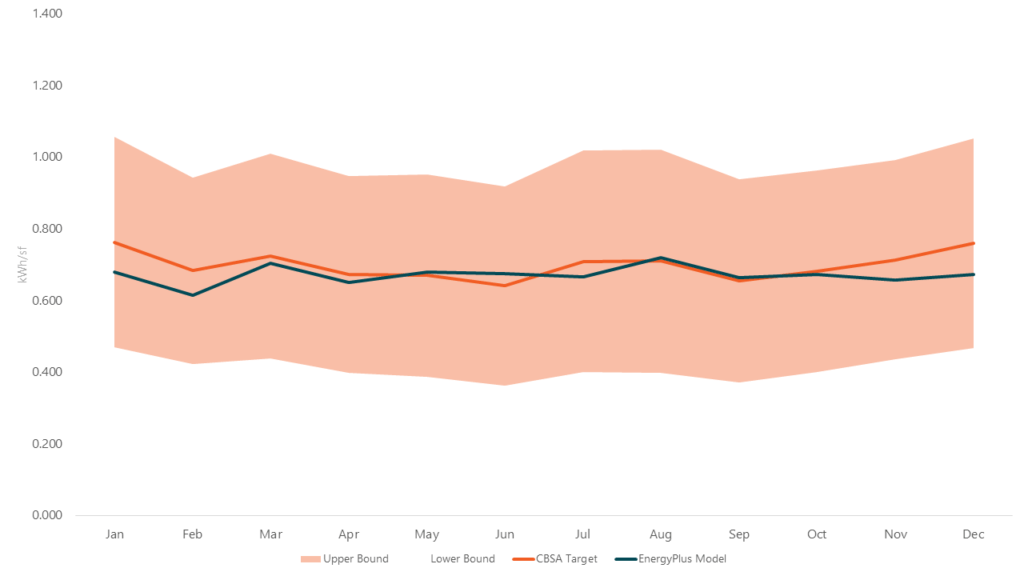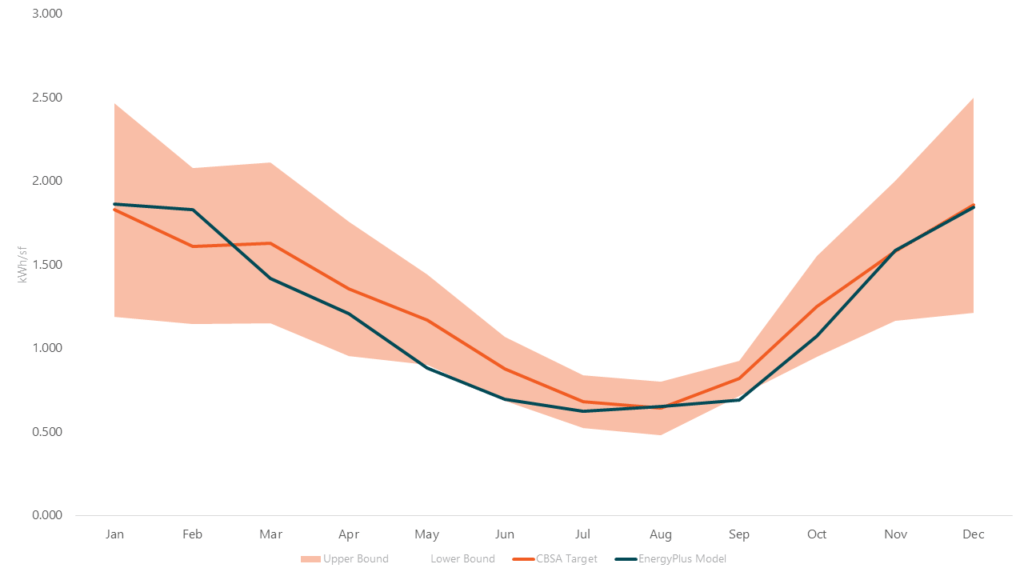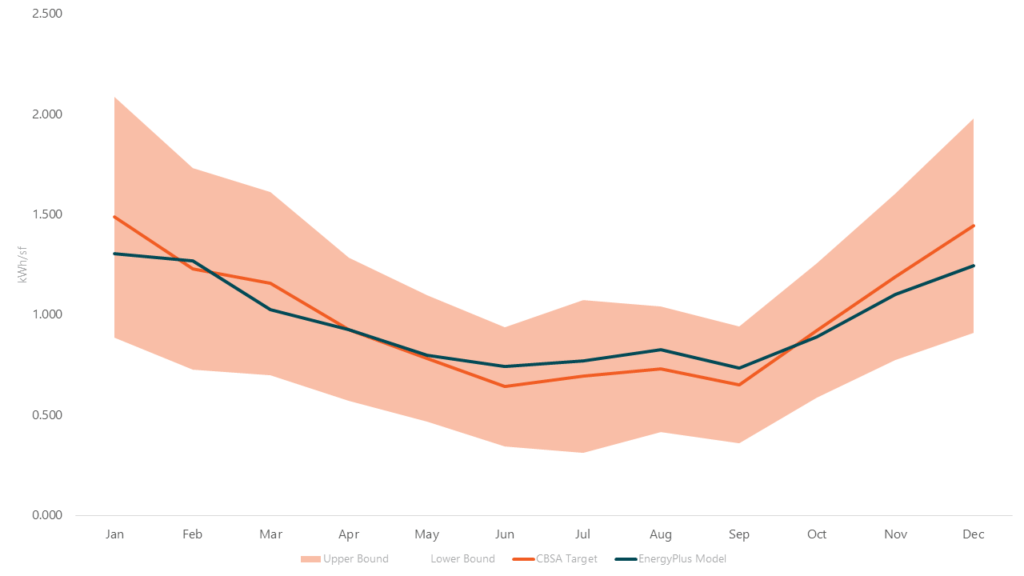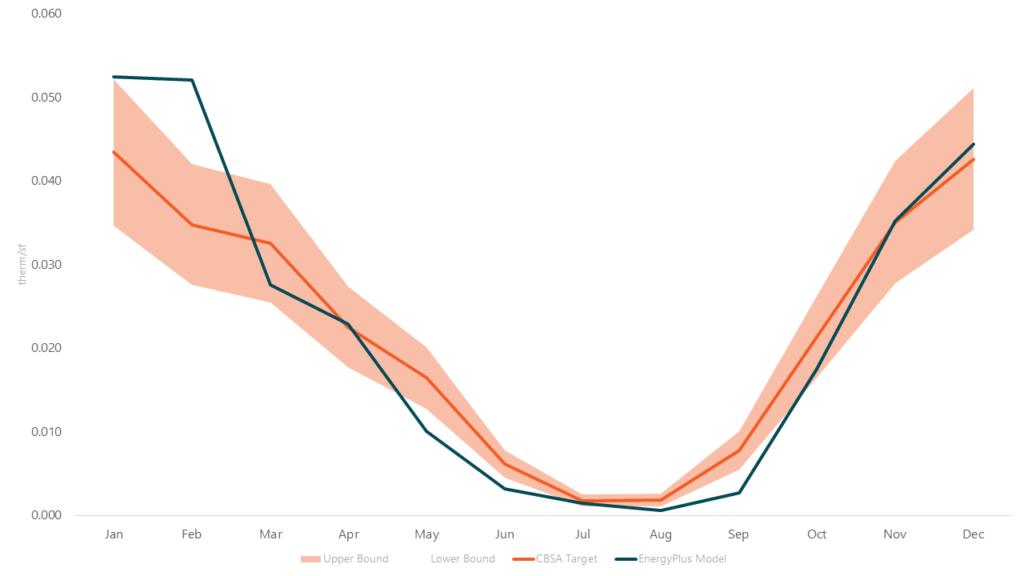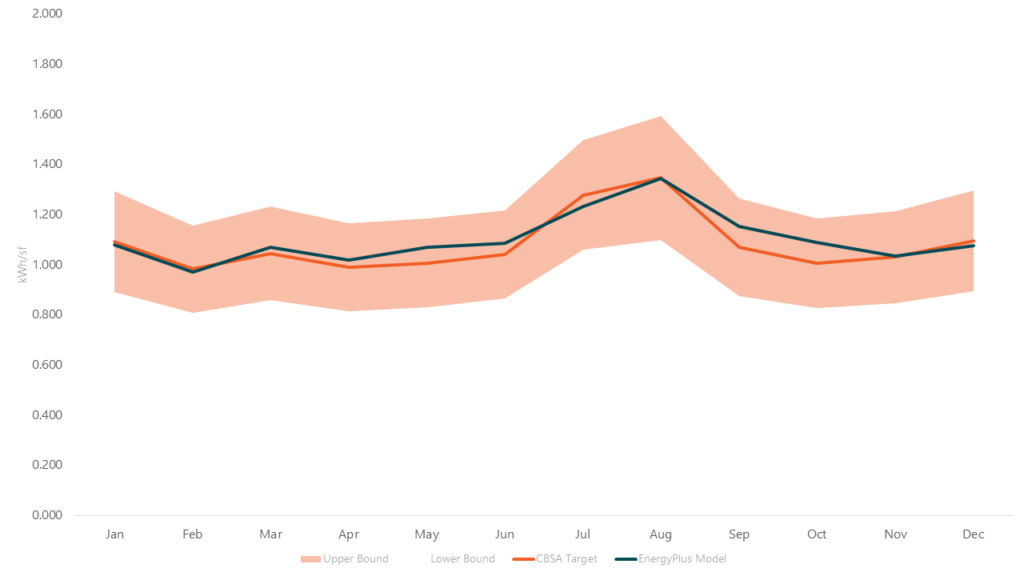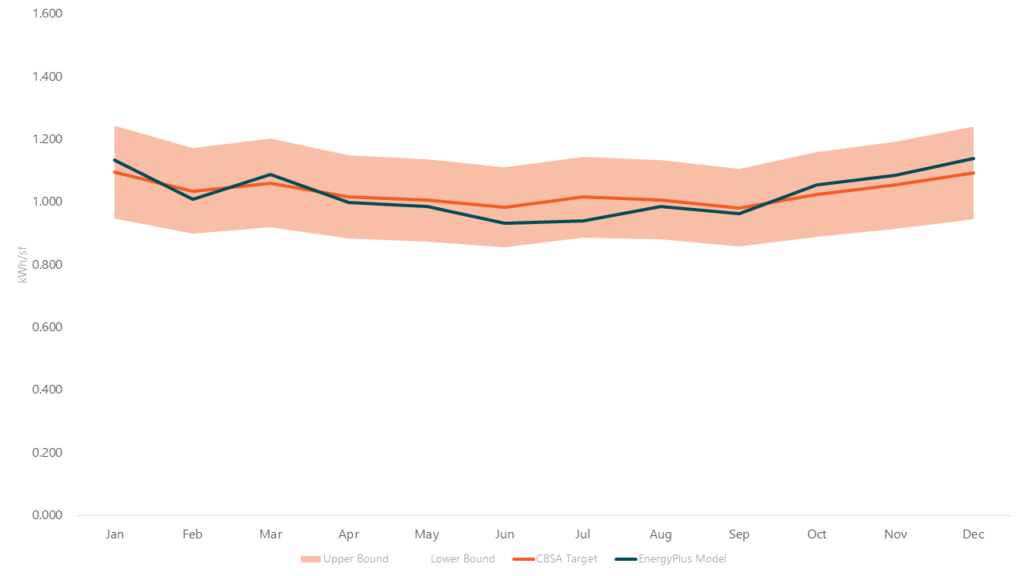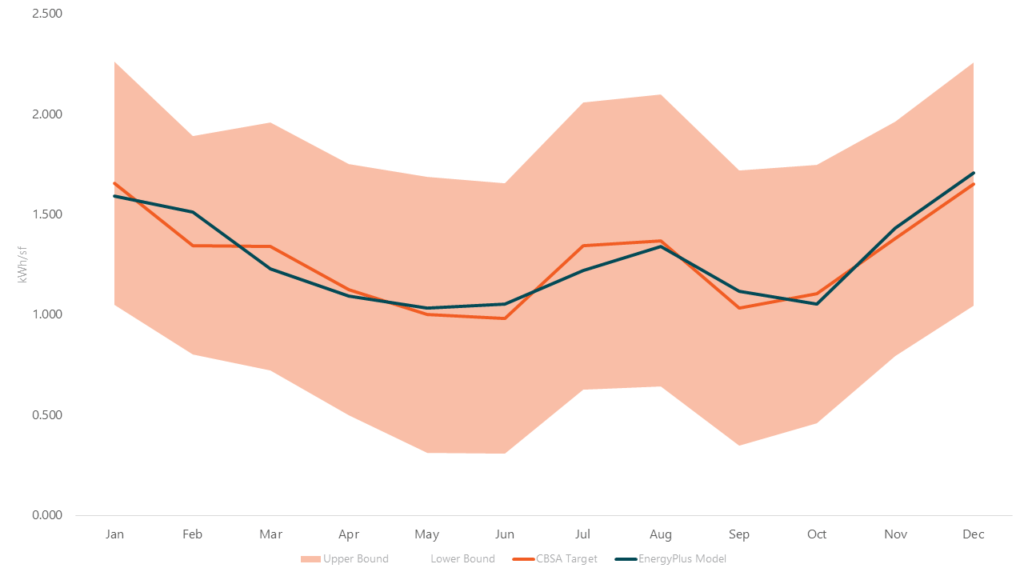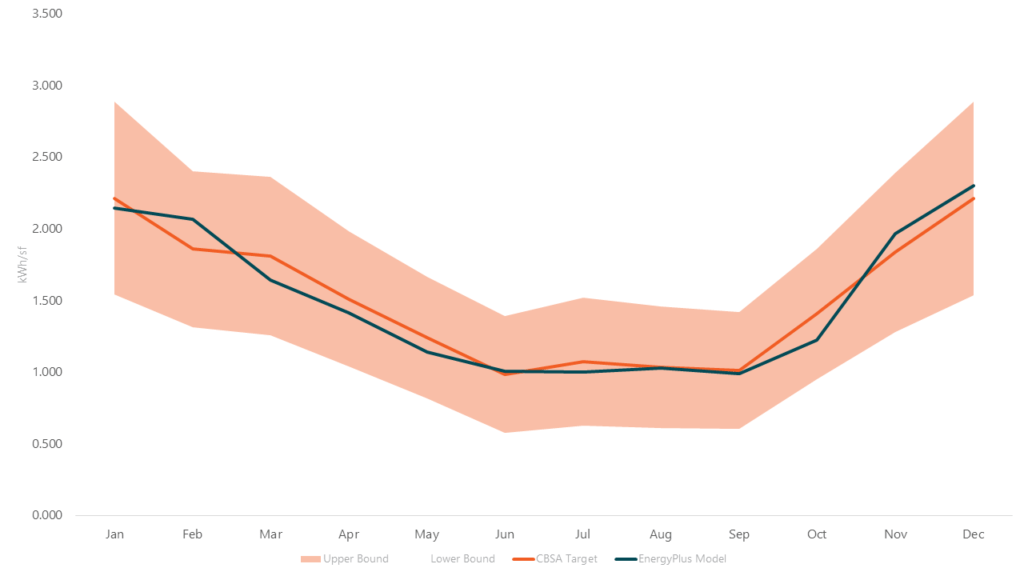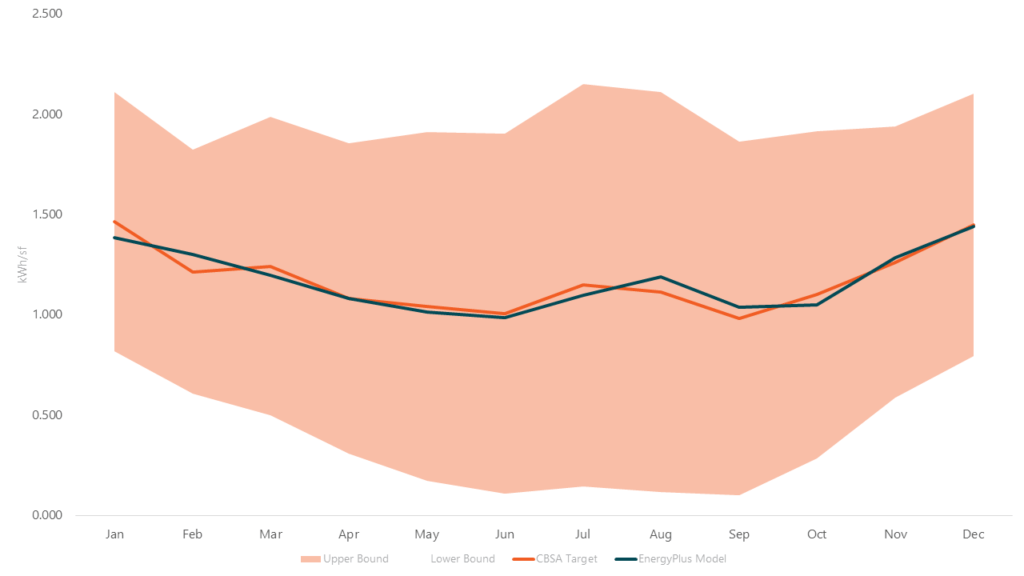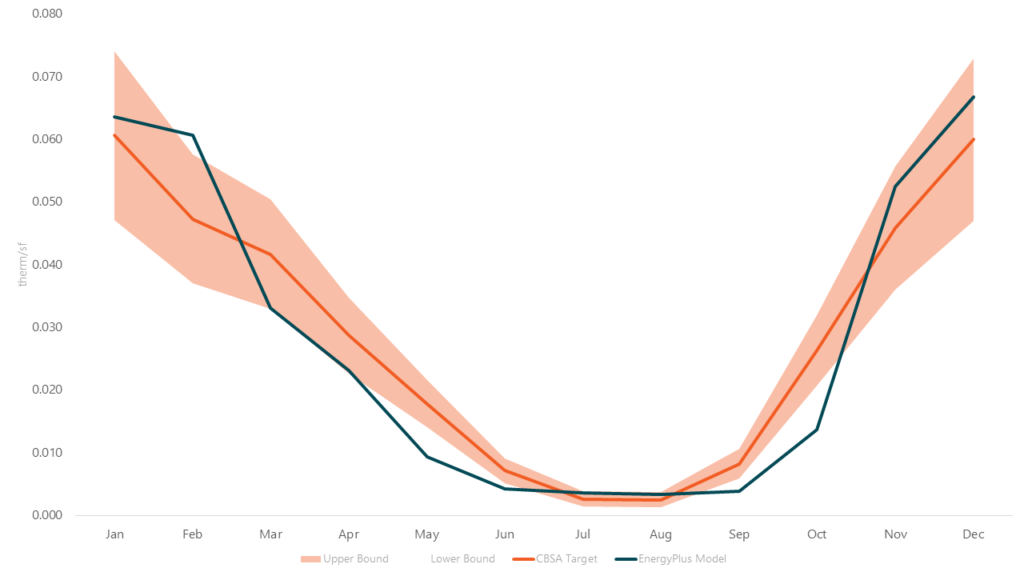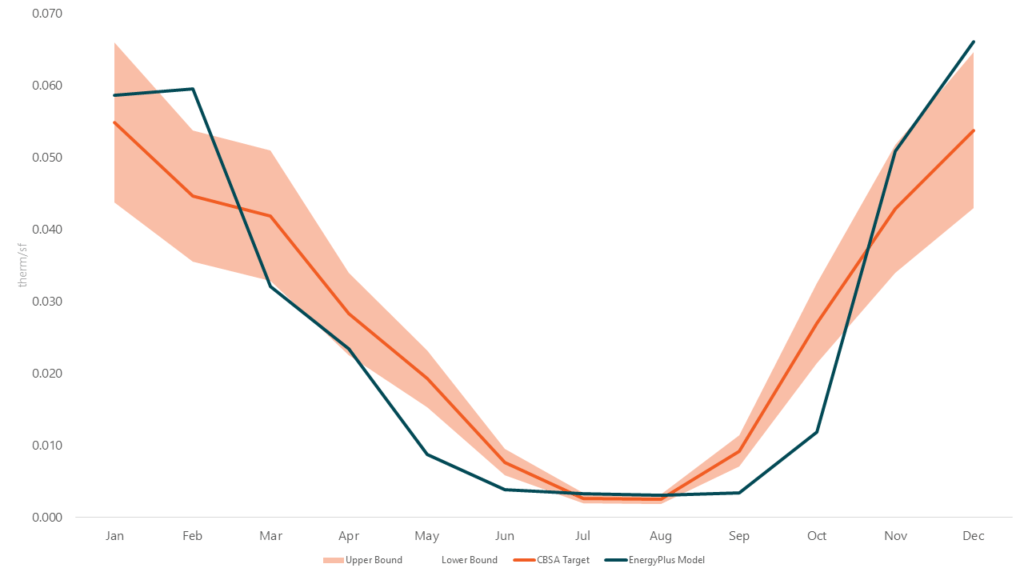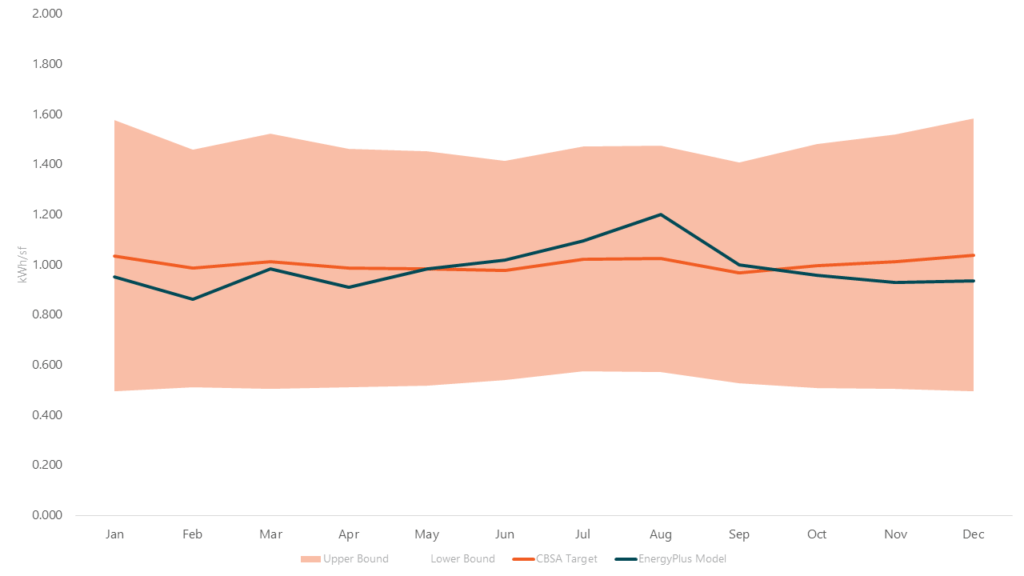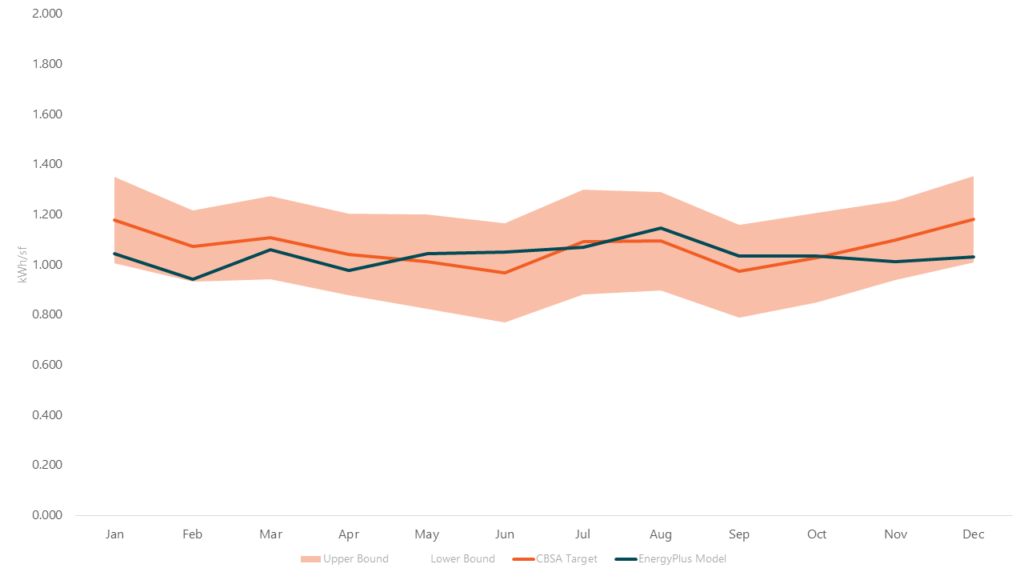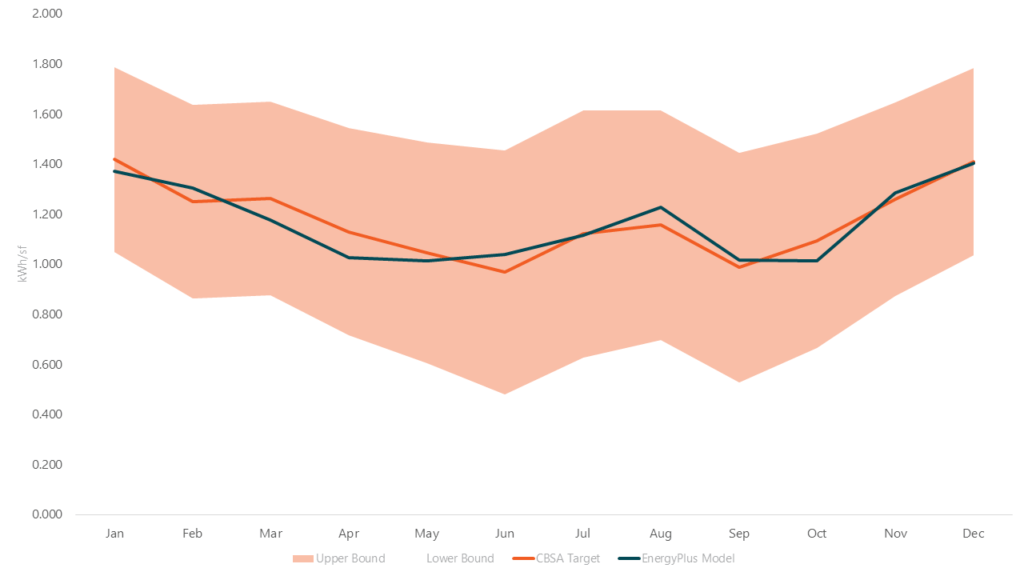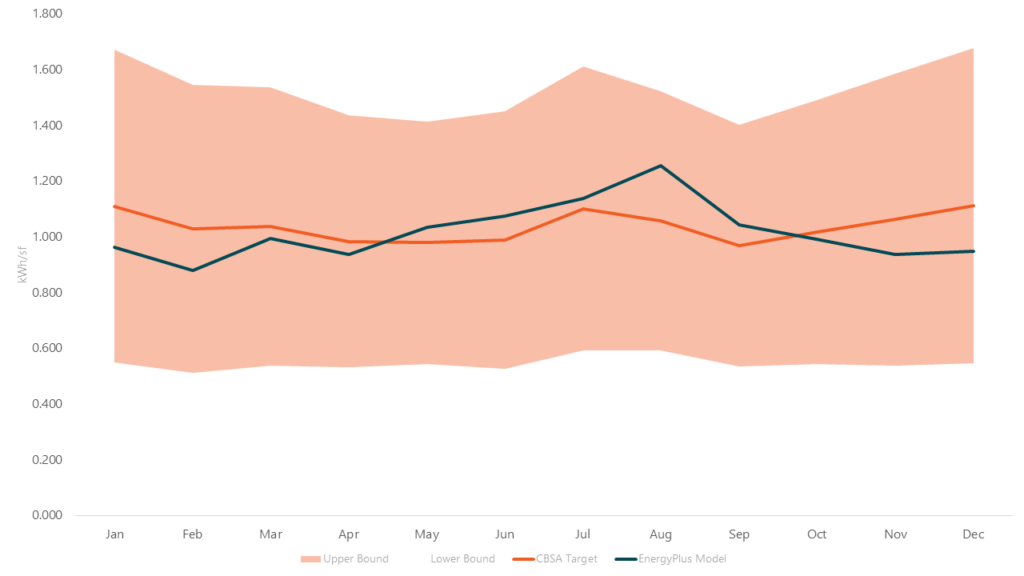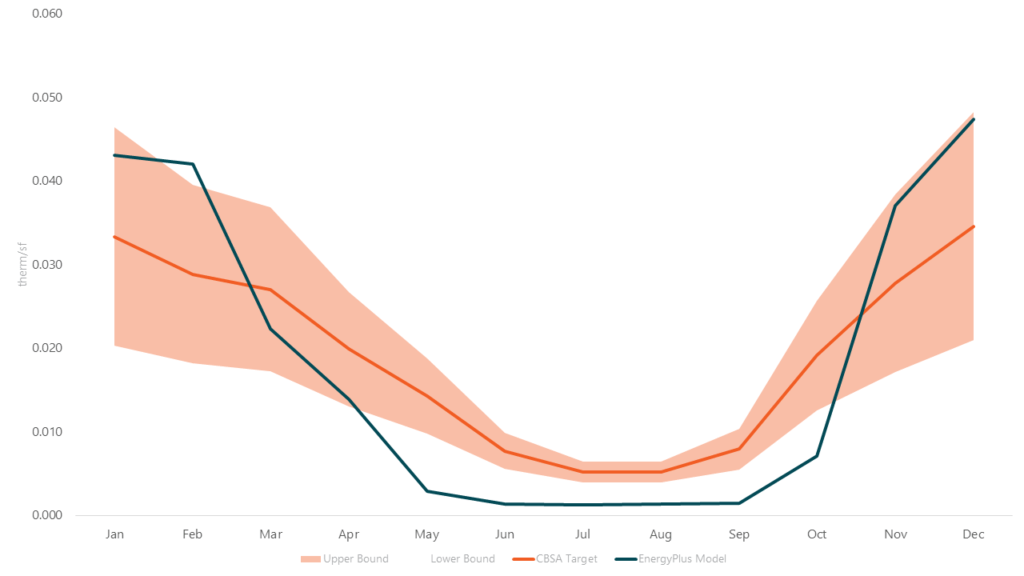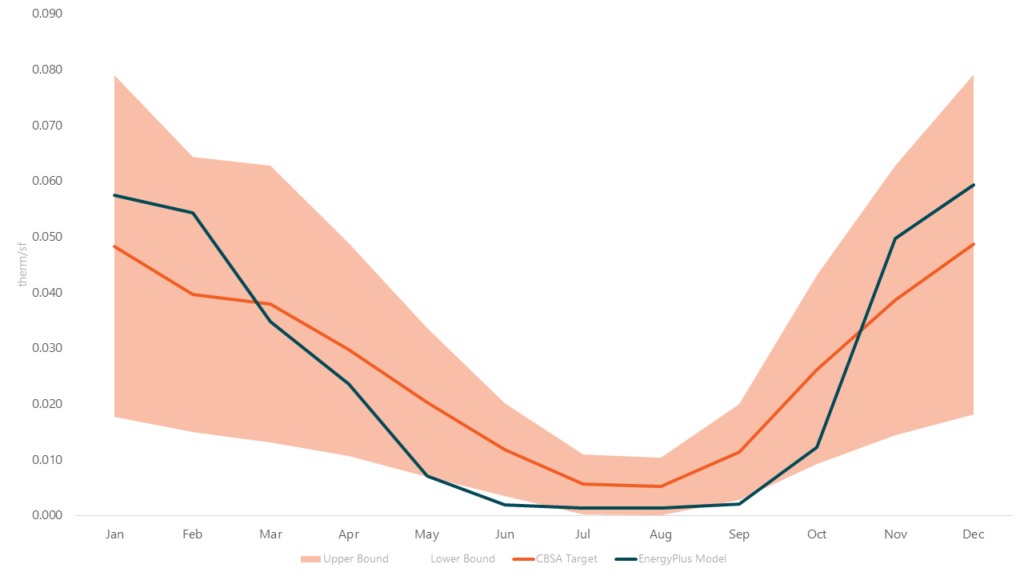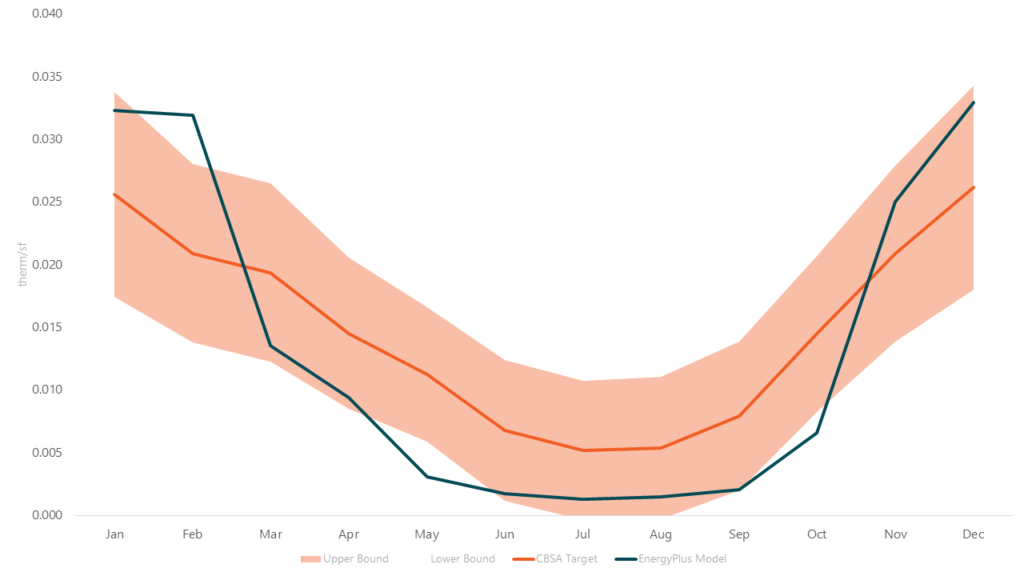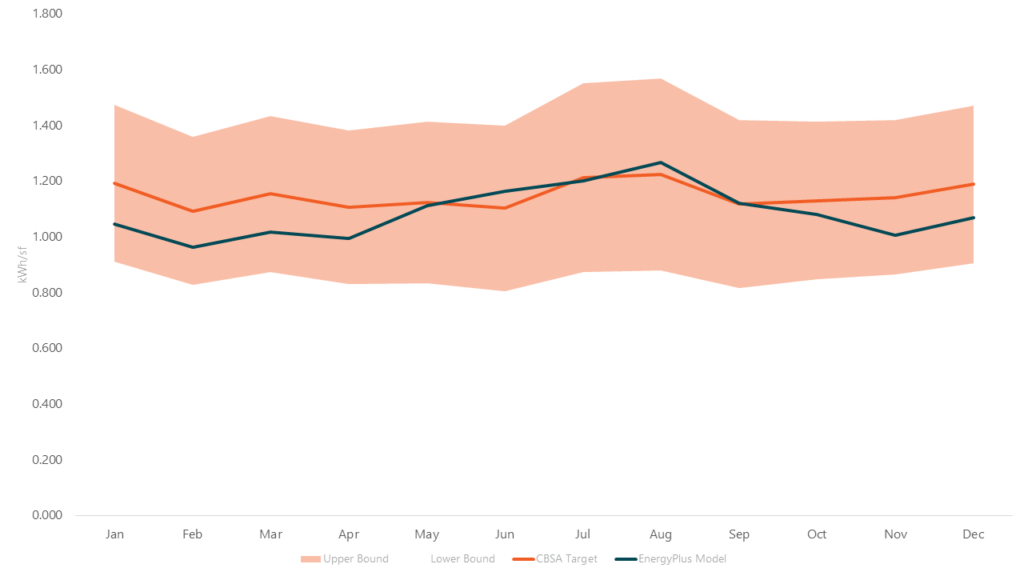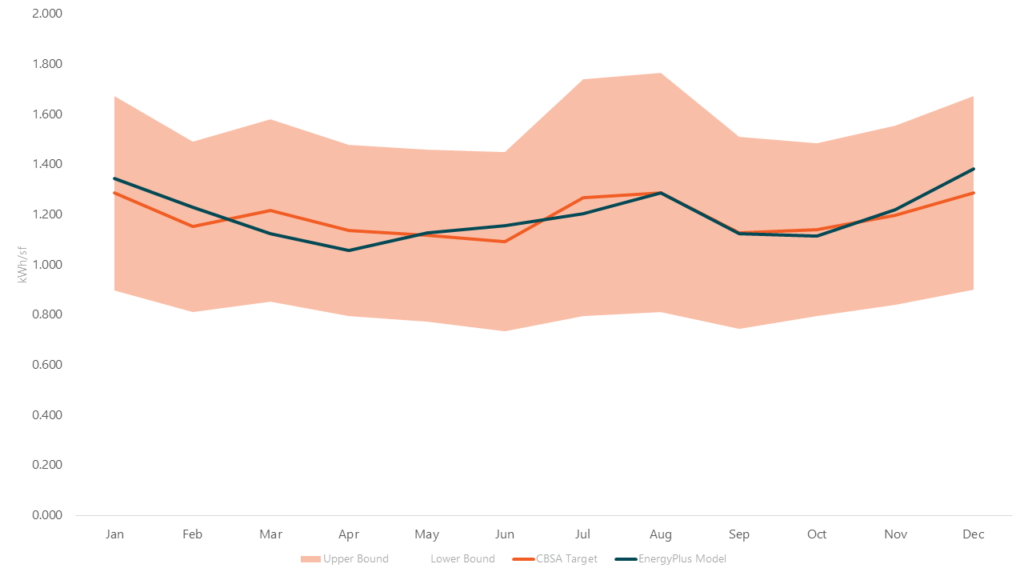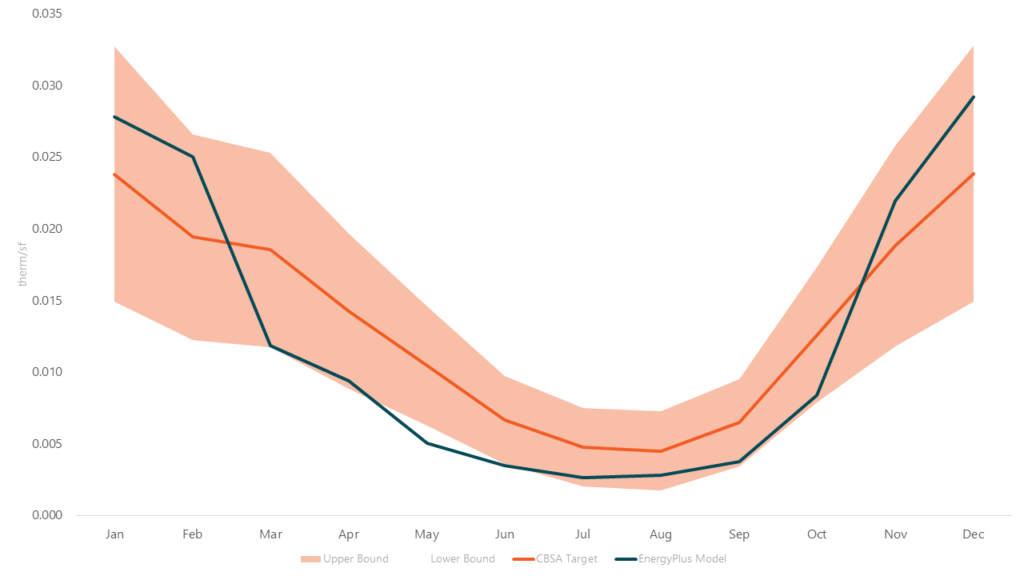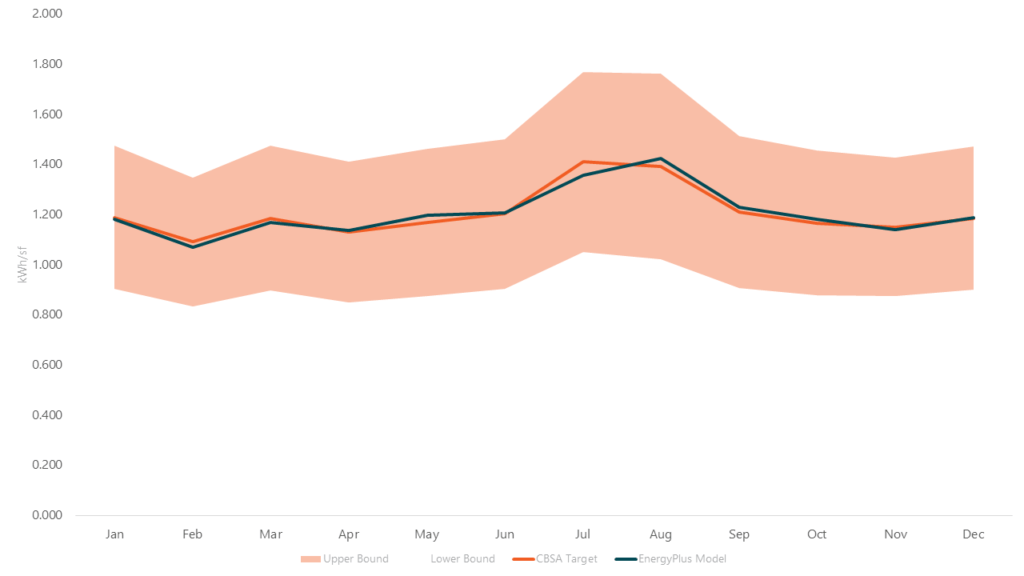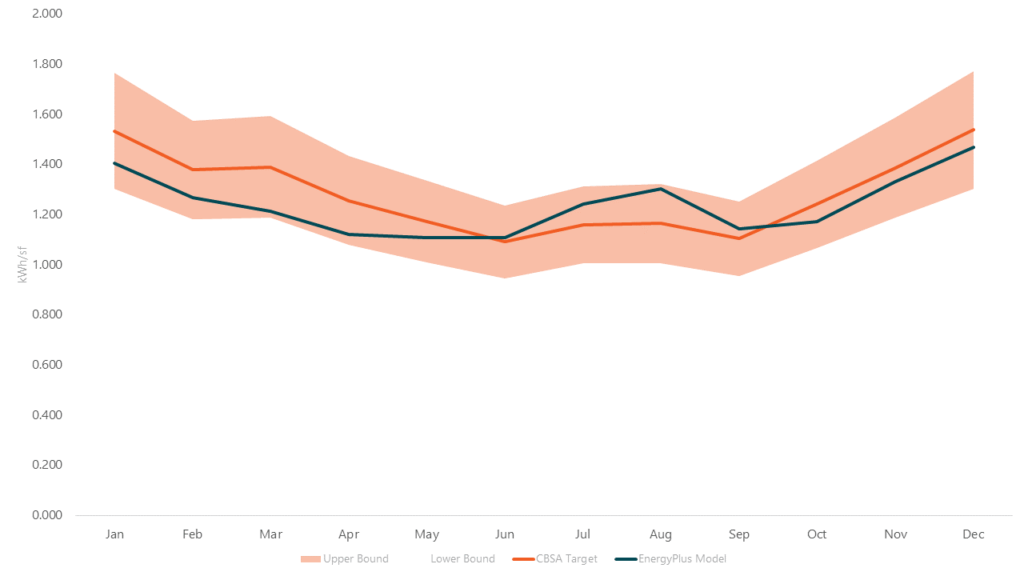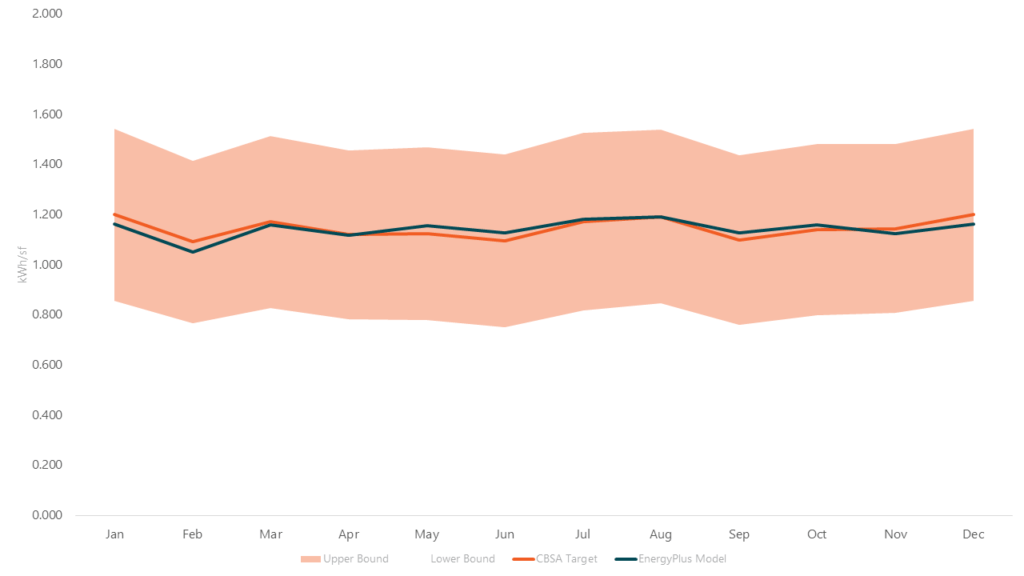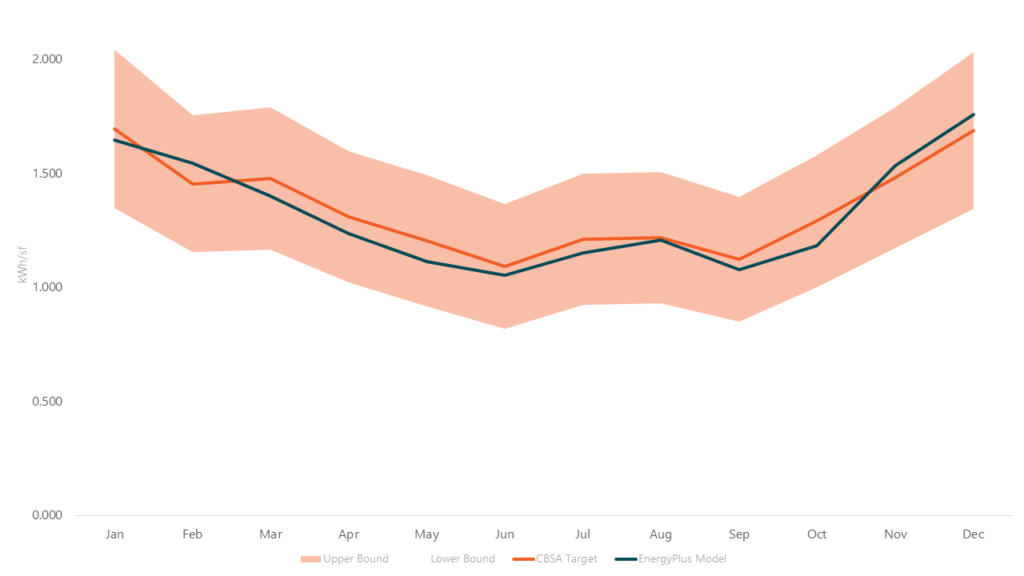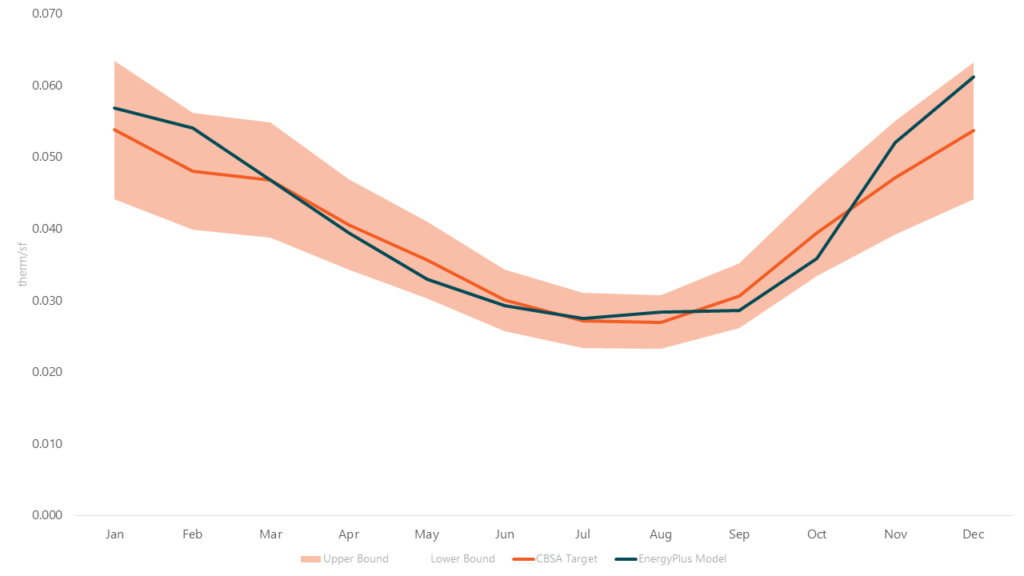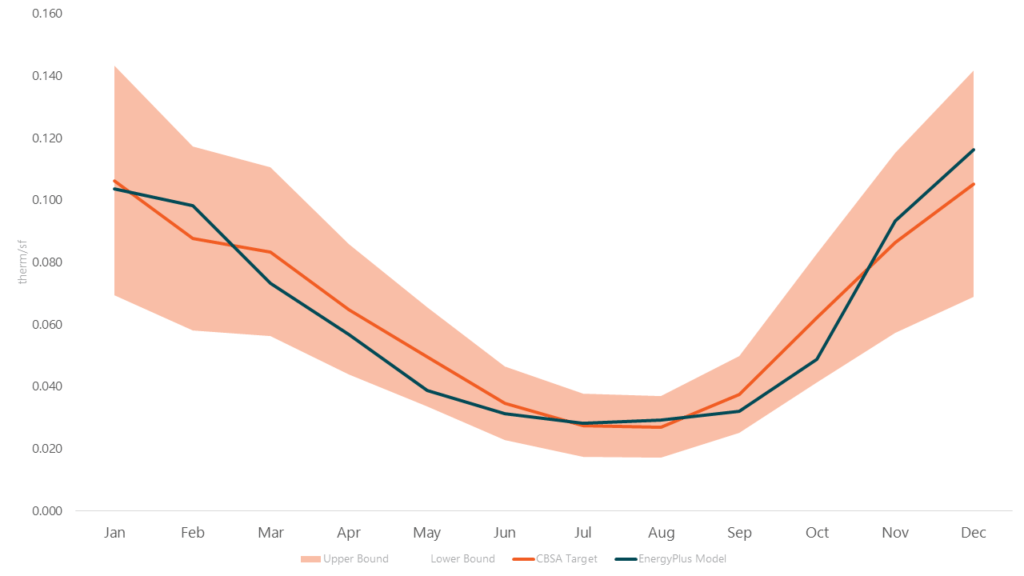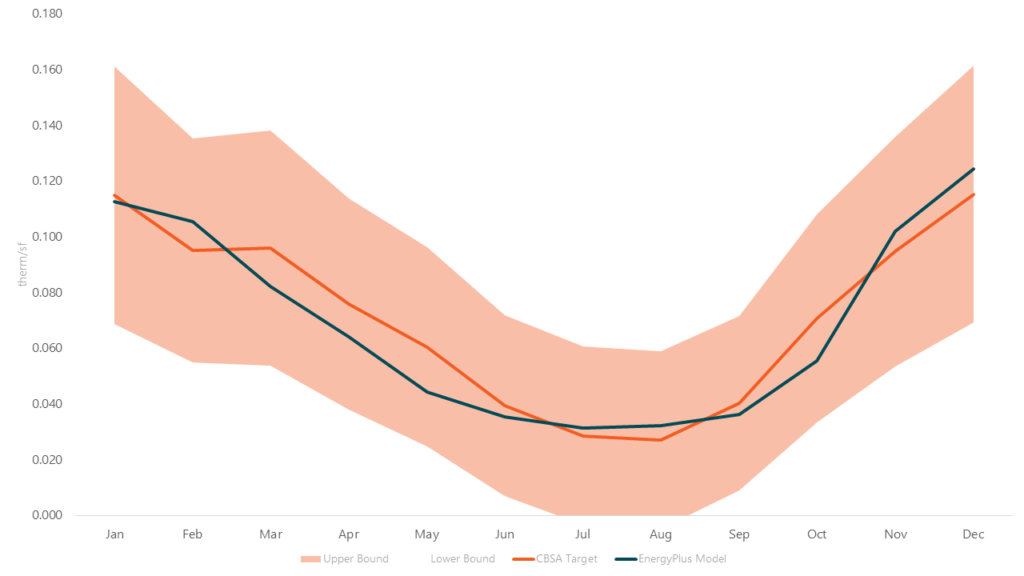RTF Commercial EnergyPlus Building Model Alignment to Regional Data
The Regional Technical Forum (RTF) uses building energy simulations (BES) to evaluate regional energy savings from a wide range of energy efficiency measures. Creating simulations that represent real-world buildings is imperative for regional power planning. To that end, the RTF turned to Cadeo Group to align five commercial building prototypes—warehouse, stand-alone retail, medium office, large office, and residential care—using the most common respective heating, ventilation, and air conditioning (HVAC) systems to regional billing data from the Northwest Energy Efficiency Alliance’s Commercial Building Stock Assessment (CBSA).
The Cadeo team succeeded in aligning the commercial building prototypes and HVAC combinations by following these two steps:
1. Creating monthly, weather-normalized target energy use intensity (EUI) curves using CBSA data for both gas-side and electricity-side energy usage.
2. Adjusting commercial building prototype inputs to align models to gas and electric EUI target curves.
Adjusting inputs until BES results match consumption target curves is an iterative process. It can be extremely time intensive as the number of models aligned increases. In total, we aligned 18 commercial prototype and HVAC combinations. The Cadeo team accomplished this by using the RTF’s Modelkit Athleisure commercial building simulation program. Modelkit Athleisure is an EnergyPlus-based parametric analysis tool where users simultaneously define parameters for multiple models through an Excel workbook and run simulations for all models. This format allows for quick changes to multiple models, parameter comparisons between models, and a fast iterative simulation process when aligning simulation results to a target.
Results
The figures below display all target curves (orange curves), 90% confidence interval acceptance ranges (orange areas), and aligned model curves (teal curves) generated from Modelkit Athleisure for all 18 building-type and HVAC combinations. Each combination has varying number of instances (n) from the CBSA data. The end result of our efforts are commercial building prototypes calibrated to real-world buildings. Moving forward, the RTF can use these to estimate regional energy savings and develop a wide array of energy efficiency measures. The final workbook and presentation can be found on the RTF website.

